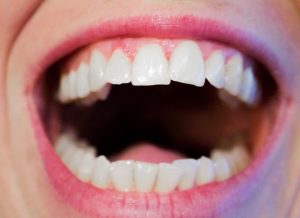Receding gum is a condition where the roots of the teeth become exposed, and can lead to increased risks of decay and even loss of teeth if not treated. Gum tissue is a layer of skin over the bone tissue of the upper and lower jaw. When the gums recede, there are gaps formed between the gum line and teeth, and this makes it easier for disease-causing bacteria to build up. This is a common dental problem and many people don’t know when they have it because it occurs gradually. The first sign of receding gums is tooth sensitivity or the tooth looking a little longer than usual. A thorough dental exam will reveal issues that may need to be addressed.

If you suspect your gums have started receding, make an effort of seeing a dentist as soon as possible. Modern dentistry and oral hygiene have made it easier to treat receding gums than in the past. It is easier to prevent and treat this condition. Why do gums recede and how can the progression be stopped?
Periodontal Diseases; they can destroy gum tissues and the supporting bone holding the teeth in place. Gum disease is the number one cause or receding gum.
Genes: There are people who are more likely to get this condition. A number of studies have shown about a third of the population are predisposed to gum disease even if they practice oral hygiene.
Aggressive tooth brushing: If the teeth are brushed too hard or in the wrong way, the enamel of the teeth can be forced to wear away and cause receding gums. It is important to learn the right way to brush teeth. It is also important to teach your kids the right way to brush the teeth to prevent receding gums in the future.
Poor dental health: poor dental health will play a big part in gum recession. Inadequate brushing, rinsing, flossing, and not using antibacterial mouthwash can make it easier for plaque to turn into tartar (calculus) which can lead to gum recession. The calculus can only be removed by professional dental cleaning. You need to brush your teeth regularly and use an antibacterial mouthwash. You also need to make an appointment for dental cleaning to remove tartar.
Tobacco: tobacco has been shown to cause gum recession. You need to stop using tobacco products to stop the progression of gum recession. See a dentist to remove the plaque.
Grinding and Clenching of teeth: grinding or clenching can put a lot of force on the teeth and can cause gum recession. If you have this condition, see a dentist for treatment of grinding and clenching of teeth. There are some treatment options you can try out at home and see if it works.
Hormonal Change: the fluctuation hormone levels in females during their lifetime make the gums more vulnerable and sensitive.
The first step to treating the condition is determining the factors that contribute to receding gums.
There are different dental treatment options that can be used to treat the condition.
Deep Cleaning
A dentist can use special tools to remove the plaque and tartar buildup on the roots where the recession is taking place, a procedure referred to as root planning.
Gum Grafting
This is the process of removing your healthy gum tissue from the roof of the mouth (palate) or gum grafting material to replace the missing gum tissue. The dentist can recommend a periodontist or dental specialist dealing with gum tissue and supporting bone for the surgical procedure.
Regeneration
In severe cases of receding gums, the bone may be destroyed.
Advancement in dentistry has allowed the regeneration of bone and tissue where there is bone loss.





